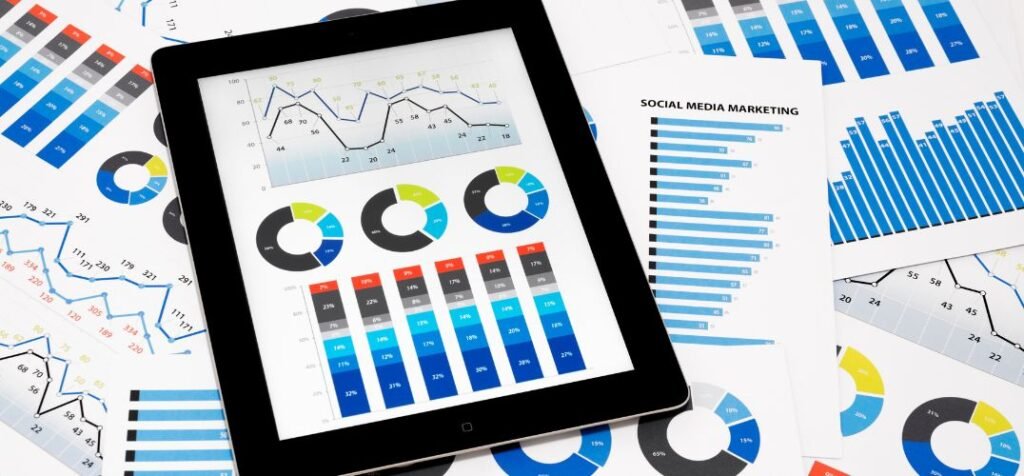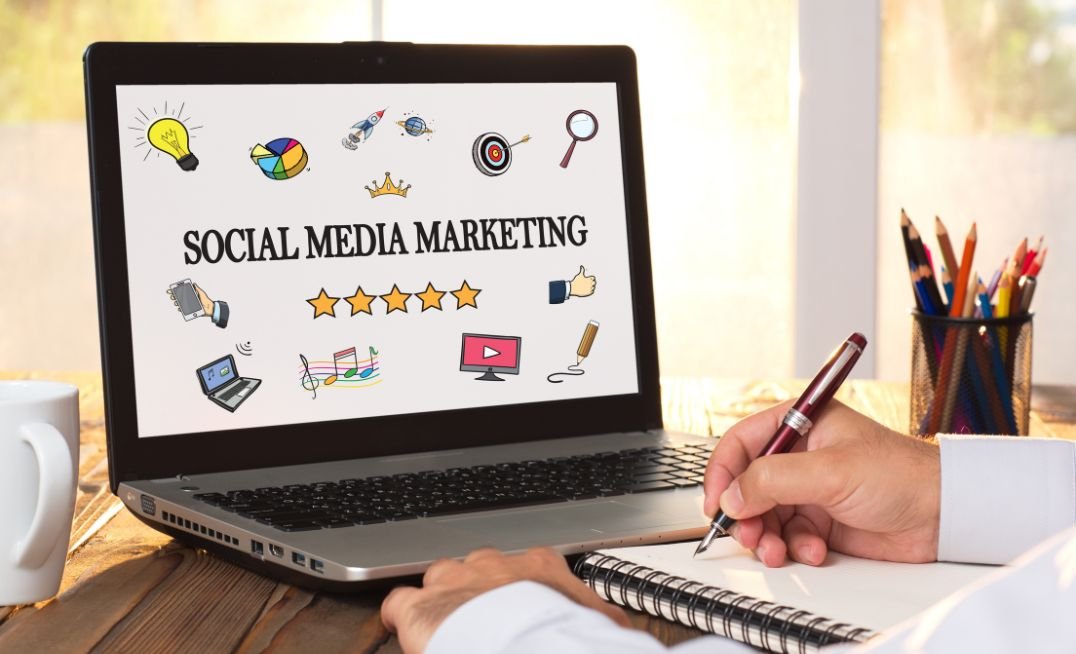Table of Contents
According to the latest global social media statistics research summary for 2024, around 62.3% of the world’s population is using social media. Hence, connecting with customers through social media platforms has become essential for business success. Hyperlocal social media marketing emerges as a potent strategy in this endeavor, providing businesses with the means to intimately engage with their local community.
What is Hyperlocal Social Media Marketing?
Hyperlocal social media marketing is a targeted marketing strategy that focuses on engaging with potential customers within very specific geographic areas, such as neighborhoods, cities, or even particular streets. Unlike broader social media marketing approaches that cast a wide net, hyperlocal marketing narrows its focus to connect with users who are physically close to a business’s location.
This strategy involves leveraging social platforms to reach and engage with local audiences in a personalized and meaningful way. By customizing social media content, promotions, and interactions to the interests and needs of the local community, businesses can establish a stronger presence and foster deeper connections with their target audience.
This can include providing updates on:
- Local Community Events and Gatherings
- Showcasing Iconic Landmarks or Historical Sites
- Featuring Local Businesses and Entrepreneurs
- Spotlighting Distinctive Products or Services Indigenous to the Region
- Sharing Stories of Local Success and Innovation
Popular Social Platforms for Hyperlocal Marketing
- Nextdoor
- Google My Business
- Yelp
- TikTok
Hyperlocal Marketing Vs Hyperlocal Advertising
Hyperlocal marketing and hyperlocal advertising are strategies that focus on targeting a highly specific geographic area, typically within a radius of a few miles or even a single neighborhood or street. These approaches aim to engage with potential customers at a local level, delivering tailored messages and promotions relevant to their immediate surroundings.
Why Hyperlocal Marketing?
Hyperlocal marketing involves various tactics to connect with the local community, such as:
- Geotargeting
Utilizing location-based targeting on digital advertising platforms to reach users within a specific geographic area. - Localized Content
Creating content, including social media posts, blog articles, and newsletters, that speaks directly to the interests and needs of the local audience. - Community Engagement
Actively participating in local events, sponsoring community initiatives, and supporting neighborhood causes to build relationships and trust within the community. - Local Partnerships
Collaborating with other businesses, influencers, or organizations within the same geographic area to amplify marketing efforts and reach a broader local audience.
Why Hyperlocal Advertising?
Hyperlocal advertising specifically refers to the use of paid advertising channels to target users within a narrowly defined geographic area. This can include:
- Localized Social Media Ads
Running targeted advertisements on platforms like Facebook, Instagram, and Twitter, using geotargeting features to reach users within a specific radius of a business location. - Search Engine Advertising
Using location-based keywords and targeting options in search engine marketing (SEM) campaigns to appear in search results for users within a particular area. - Location-Based Mobile Ads
Displaying ads on mobile devices based on users’ current location or proximity to a business, often through techniques like geofencing or beacon technology. - Local Directory Listings
Investing in online directory listings and review platforms that cater to specific geographic regions, ensuring visibility to local customers searching for products or services in their area.
Benefits of Hyperlocal Social Media Marketing Campaigns
With over 4.59 billion users globally in 2022, social media has become an integral part of online engagement, expected to reach nearly six billion users by 2027. Its usage is pervasive across all regions, with a global penetration rate of 59% as of January 2023, driven significantly by mobile devices.
On average, individuals spend 151 minutes per day on social media and messaging platforms, with Latin America leading in daily usage. Facebook remains the dominant platform, boasting approximately 2.9 billion monthly active users, while messaging apps like WhatsApp and Telegram also enjoy substantial popularity.
Source: Number of social media users worldwide
Hyperlocal social media marketing campaigns offer numerous benefits for businesses seeking to connect with their local community and drive tangible results, such as:
| Building community, fostering local connections. | Increasing foot traffic and boost revenue for stores. |
| Driving engagement and interaction with customers. | Tailoring content to match local interests. |
| Targeting locals boosts conversion rates | Contributing to local community growth. |
| Optimizing ad budgets by focusing on relevant areas. | Reaching a highly interested audience. |
Who Should Use Hyperlocal Social Media Marketing?
It is beneficial for a variety of businesses and service providers, including:
1. Brick-and-Mortar Shops
Retail stores, restaurants, cafes, and other physical establishments can leverage hyperlocal marketing to attract local customers and drive foot traffic to their locations.
2. Small Businesses
Hyperlocal marketing offers small businesses with limited resources a cost-effective way to target their local community, build brand awareness, and compete with larger competitors.
3. Service Providers in Specific Areas
Professionals such as plumbers, electricians, landscapers, and cleaners can use hyperlocal marketing to reach potential clients in their service area and generate leads for their services.
4. Businesses During Local Events or Festivals
Companies participating in or sponsoring local events, festivals, or community gatherings can maximize their visibility and engagement by implementing hyperlocal marketing strategies tailored to the event’s attendees.
5. Real Estate Agents
Real estate agents can use hyperlocal marketing to target potential homebuyers or renters in specific neighborhoods or communities, showcasing properties and local amenities to attract interest.
6. Fitness Studios and Wellness Centers
Gyms, yoga studios, spas, and wellness centers can use hyperlocal marketing to reach individuals within close proximity to their facilities, promoting classes, services, and special offers to encourage sign-ups and memberships.
How to Develop Your Hyperlocal Strategy?
Developing a successful hyperlocal social media marketing strategy involves several key steps:
Identify Your Target Audience and Their Interests
- Understand the demographics, preferences, and behaviors of your local audience.
- Conduct market research to uncover what resonates with your target demographic and tailor your content accordingly.
Know the Local Market and Competition
- Analyze the local market landscape, including competitors and their strategies.
- Identify gaps or opportunities in the market that your business can capitalize on.
Create Content Tailored to the Local Audience
- Develop content that speaks directly to the interests, needs, and concerns of the local community.
- Showcase local events, news, and stories that resonate with your audience.
Utilize Local Hashtags and Geotags
- Incorporate relevant local hashtags and geotags in your social media posts to increase visibility within the local community.
- Participate in local conversations and engage with users who are active in the area.
Partner with Local Influencers and Businesses
- Collaborate with local influencers, bloggers, or businesses to amplify your brand’s reach and credibility.
- Leverage their existing audience and influence to promote your products or services within the local community.
Respond Promptly to Customer Feedback and Inquiries
- Monitor social media channels for customer feedback, reviews, and inquiries.
- Respond promptly and professionally to address customer concerns and foster positive relationships with your audience.
Post Frequently and Consistently
- Maintain a regular posting schedule to stay top-of-mind with your audience.
- Consistency is key to building brand awareness and engagement within the local community.
These strategies help businesses to develop a hyperlocal social media marketing strategy that effectively engages with their local audience, builds brand loyalty, and drives tangible results within their target geographic area.
Measuring the Success of Your Hyperlocal Campaign
Measuring the success of a hyperlocal social media campaign involves tracking various metrics to gauge its effectiveness in reaching and engaging the target audience within a specific geographic area.

Here are some key metrics and methods for measurement:
- Reach Metrics
- Engagement Analysis
- Follower Growth Tracking
- Website Traffic Analysis
- Conversion Rate Assessment
- Customer Feedback Collection
- Location-based Insights
- Competitor Performance Comparison
- ROI Calculation
Challenges of Hyperlocal Social Media Marketing
Here’re the common obstacles of hyperlocal social media marketing include
- Limited Reach
Narrow geographic targeting may restrict the potential audience size, making it challenging to reach a broader market. - Difficulty in Targeting
Identifying and reaching the right audience within a specific locality can be complex, requiring detailed market research and precise targeting strategies. - Limited Resources
Small businesses may face constraints in terms of budget, manpower, or expertise, limiting their ability to execute effective hyperlocal marketing campaigns. - Competition
Local markets can be saturated with competitors vying for the attention of the same audience, making it harder to stand out and capture market share. - Changes to Social Media Algorithms
Shifts in social media algorithms can impact the visibility of hyperlocal content, requiring businesses to adapt their strategies to maintain engagement and reach.
Final Thought
Hyperlocal social media marketing is a powerful tool for businesses to connect intimately with their local community. Leveraging platforms like Facebook and Instagram, businesses can deliver targeted content and promotions, fostering authentic connections and driving foot traffic, conversions, and revenue. Despite challenges such as limited reach and competition, businesses adept in hyperlocal marketing can capitalize on its benefits to achieve sustainable growth in the digital age.





